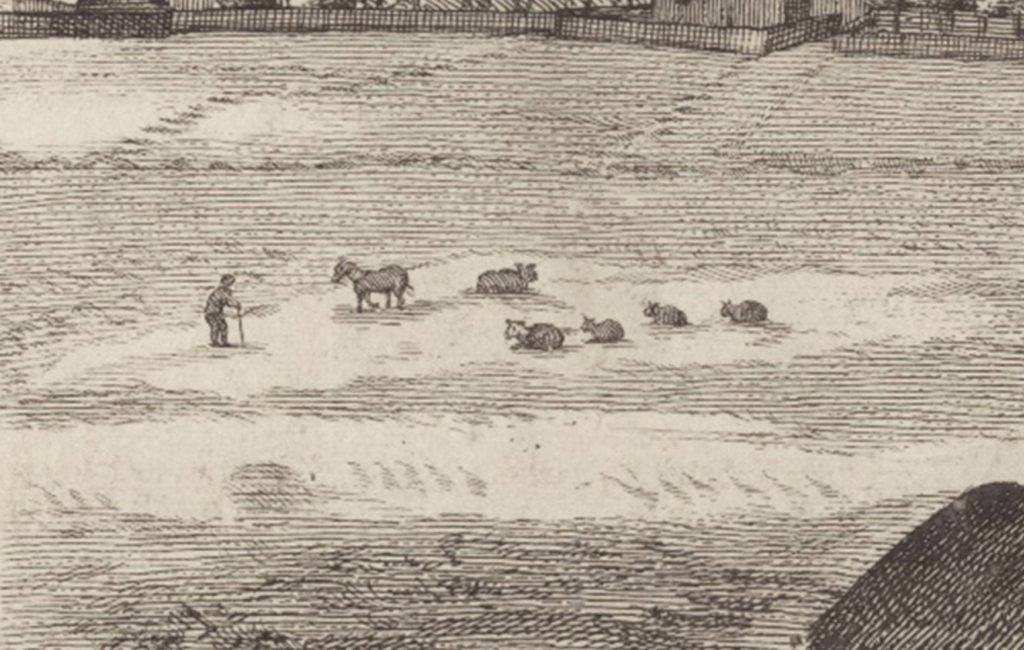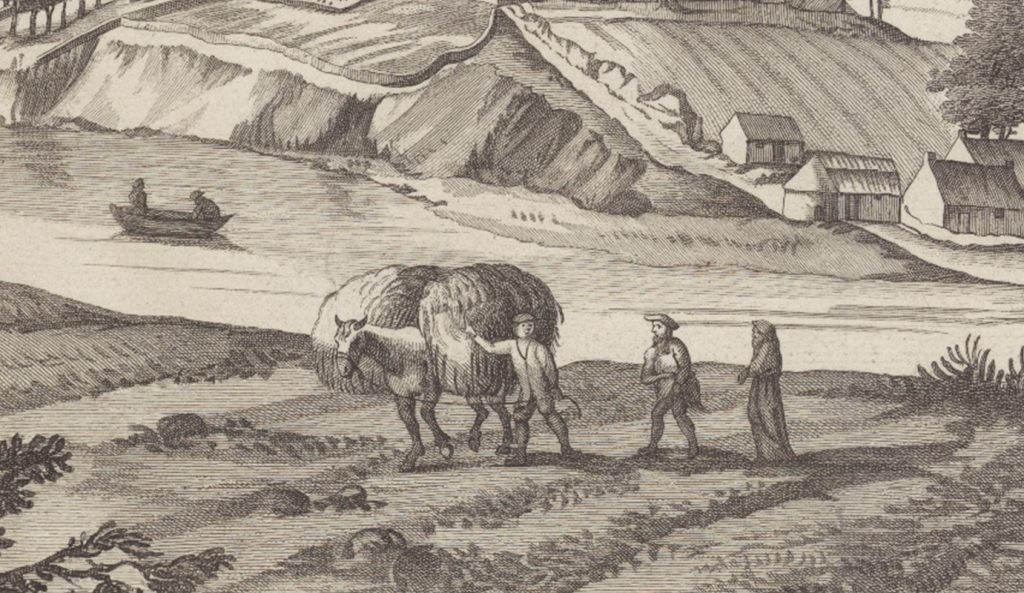Julian Goodare
My paper in Exeter took a generally static or synchronic view of forced labour. Here I would like to look at some of the issues diachronically. How did forced labour in Scotland change during the period between about 1500 and 1800?

In Exeter I looked at forced labour in connection with three groups:
- Peasant tenants and subtenants (cottars), who were required by custom to perform unpaid labour services for their landlords – often about five or ten days’ work per year.
- Colliers and salters, who were serfs – owned by their employers and unable to leave the workplace – between 1606 and 1775.
- Slaves in the West Indies, some of whom were owned by Scottish planters.
In a longer paper, I would also have liked to discuss:
- Servants, both those on longer contracts (mostly yearly and half-yearly) and day-labourers, all of whom were heavily regulated.
- Masterless men, and their coercive treatment by the poor laws (this topic was in fact touched on by Giovanni Lista in his paper in the same panel).
- Prisoners, and their transportation to the colonies as indentured labourers.
- Statute labour – unpaid forced labour for road-building and other purposes.
Although precise chronologies cannot be given for all of these groups, a broad pattern can be discerned for each group, to which I will attach dates – mostly rough dates. It will then be possible to ask: How far do these patterns coincide? Did early modern Scotland witness a general rise, or (later) a general decline, of forced labour?
Firstly, labour services by tenants have no clear origin, but they seem already well established by 1500. Perhaps they arose in the central middle ages. In the early modern period, a few estates began commuting these services for cash. Commutation seems to have accelerated after 1750, though this is obscured by the larger-scale shake-out of tenants themselves that occurred between about 1750 and 1850. A statute of 1746 restricted landlords’ powers to demand labour services, which probably contributed to their decline.
Secondly, the serfdom of the colliers and salters was a distinct historical phase, beginning in 1606 and ending in 1775. This specific serfdom can be set within a broader context of coercive regulation of ‘servants’ between about 1600 and 1800 – my topic number four above. From about 1750, state regulation of servants began to interest itself in ‘combinations’ – an early aspect of what would develop into laws against trade unions.
Thirdly, chattel slavery in the West Indies was also a distinct phase. It arose gradually from about 1650, and declined between about 1800 and 1850, as part of the rise and decline of slavery in Britain’s colonies more broadly.
Direct coercion by the state, rather than state support for coercion by ‘masters’, was visible in my topics numbered five to seven above: masterless men, prisoners and statute labour. (The distinction between ‘masters’ and ‘state’ has some value, but it should be borne in mind that the masters to some extent were the state.) Taking these topics together, a slow rise in state coercion can be perceived between about 1550 and 1600, and a slow decline between about 1750 and 1850. Masterless men, for instance, were a concern of poor law statutes from 1575 until at least 1700, after which policy-making shifted towards the provision of poorhouses and workhouses – still coercive but in a different way. Poorhouses and workhouses continued into the twentieth century, but by 1800 they were part of a policy regime that generally managed destitution in a way that was less directly coercive. Transportation of prisoners to the colonies occurred mainly between about 1650 and 1700. Statute labour for road-building seems to have been operative mainly between about 1650 and 1750.
So far, then, we perhaps see an arc: a general rise in forced labour between about 1500 and 1650, followed by a general decline between about 1700 and 1800. It could be added that nineteenth-century Scotland was not entirely a paradise of free labour; there was widespread debt bondage as part of the ‘truck’ system. But this was subsumed within the economic bond between employer and employee, rather than being directly coercive. So the early modern period could be seen as a peak period for forced labour.
The idea of a rise-and-decline arc for forced labour clearly has much in its favour. But we might also take a longer view, and ask whether there were once-for-all transitions from forced to free labour. It will have been noted above that there was no early modern rise in tenants’ labour services. Labour services have a longer history – probably a much longer one. The little research that has been done on rural society in late medieval Scotland seems to have established that serfdom withered away quietly after about 1350 with no attempt at a seigneurial reaction, but labour services may well have been demanded throughout the late medieval period and earlier. As for farm ‘servants’, although they were regulated with more overt coercion after about 1600, we may suspect that late medieval farm servants did not live in a paradise of free labour either. Baron courts, the main local institutions coercing rural labour, had existed throughout the Middle Ages; they were curtailed only around 1750, in what may well be seen as a once-for-all transition.
All this was related to a further and perhaps more fundamental transition in rural society: from peasant self-employment to farm service on entrepreneurial farms. A massive shake-out of peasant tenants, sometimes amounting to ‘clearance’, took place between about 1750 and 1850. Leases were not renewed, smaller holdings were combined, and sometimes – especially in the Highlands – tenants were forcibly evicted in large numbers with nowhere to go. Although this transition was not directly about forced labour, it would ideally be desirable to situate these evictions within the broader analysis of ‘forced labour’. The triumph of capitalist farming had coercive aspects.

Julian Goodare is Emeritus Professor of History, University of Edinburgh. He has published widely on early modern Scotland, including State and Society in Early Modern Scotland (Oxford: Oxford University Press, 1999) and The Government of Scotland, 1560-1625 (Oxford: Oxford University Press, 2004). He is currently co-editing Agriculture, Economy and Society in Early Modern Scotland (with Harriet Cornell and Alan R. MacDonald) for publication by Boydell and Brewer. This is part of a research project of which he is director, ‘Agriculture and Teind Reform in Early Modern Scotland’, a collaboration with the University of Dundee.
